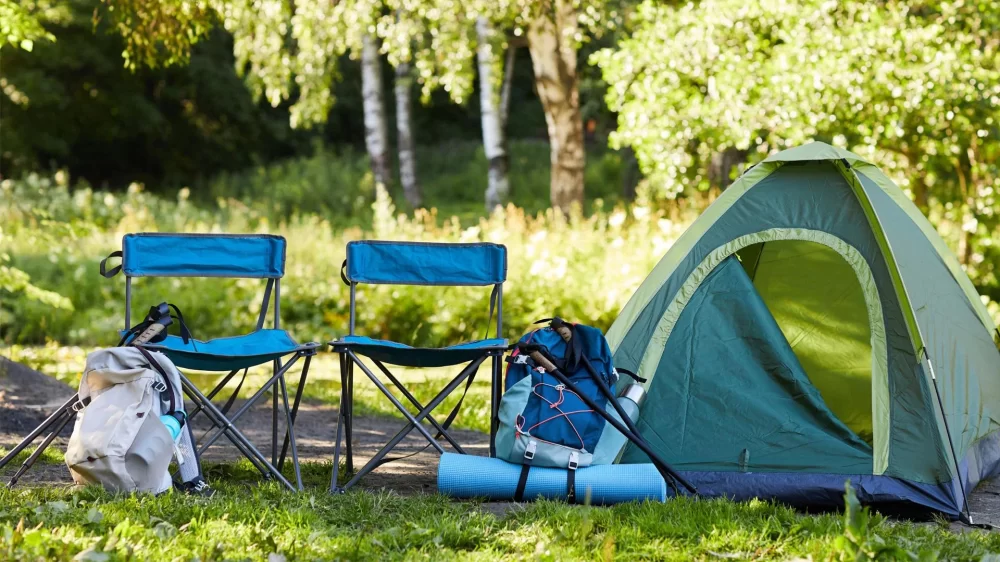Choosing the Best Eco-Friendly Camping Sites: My Sustainable Adventure
As an outdoor enthusiast, I’ve always sought out the beauty of nature. But over the years, I’ve come to realize the importance of being more conscious of my environmental footprint when enjoying the wilderness. That’s when I started researching how to choose eco-friendly camping sites. If you're like me and want to have an adventure while minimizing your environmental impact, keep reading. Here, I’ll share my experiences and tips for selecting campsites that align with sustainable values.
1. Understanding Eco-Friendly Camping
What does it mean to camp in an eco-friendly way? For me, it’s all about minimizing the harm to the environment while still enjoying the outdoors. Eco-friendly camping is more than just leaving no trace; it’s about choosing places that support conservation, respect for wildlife, and sustainable practices. In the U.S., many camping sites are making strides to reduce their carbon footprint, and it’s up to us, as campers, to support these efforts. By choosing eco-conscious sites, we contribute to protecting the natural beauty we all cherish.
2. Look for Designated Eco-Friendly or Green Certified Campsites
One of the best ways to find an eco-friendly campsite is to look for those that are certified green or have a sustainable focus. Many campgrounds in the U.S. are certified by organizations such as the Green Seal or EarthCheck. These certifications ensure that the site follows specific sustainability practices, such as energy efficiency, waste reduction, and water conservation. During my trips, I’ve always tried to book campsites with such certifications because they offer peace of mind that they’re working toward protecting the environment. A personal favorite of mine is the Pine Cliff Resort in the mountains of Colorado, where I found that they not only prioritize conservation but also educate campers on sustainable practices.
3. Opt for Sites with Minimal Environmental Impact
Some campsites are more eco-conscious than others, and it's important to do a bit of research before booking. Look for campgrounds that are located in natural, unspoiled areas and have practices in place to minimize their environmental impact. For example, choose campsites that use renewable energy, have composting toilets, or provide recycling options. I remember staying at a remote campground in the Pacific Northwest where they not only provided biodegradable soap but also had solar-powered lighting. It felt good knowing that the site was actively working to reduce its impact on the environment.
4. Check for Wildlife Conservation and Protection Efforts
When camping, it’s crucial to be respectful of wildlife. But I’ve found that some campsites go above and beyond to ensure that local wildlife is protected. For instance, look for campgrounds near national parks or nature reserves where strict regulations are in place to protect wildlife habitats. During my last trip to Yellowstone National Park, I stayed at a campsite that provided information about local species and encouraged visitors to avoid disturbing wildlife. These efforts are essential because they allow us to enjoy nature without causing harm to the animals that inhabit these areas.
5. Leave No Trace Principles: Respect the Land
One of the key principles of eco-friendly camping is practicing Leave No Trace (LNT). This means you should always clean up after yourself and leave the environment as you found it—or better. I’ve always made it a priority to pack out all trash, follow designated trails, and refrain from picking plants or disturbing animals. Some eco-friendly campsites even take it a step further by offering educational programs on LNT principles, which I’ve found helpful in deepening my understanding of how I can contribute to preserving the environment.
6. Choose Sites with Sustainable Access and Transport Options
Choosing a camping site that’s accessible by public transportation or offers shuttle services to popular trails or scenic spots can significantly reduce your carbon footprint. During one memorable camping trip, I opted for a site in the Adirondacks, which provided shuttle buses to local hiking spots. This not only saved me the hassle of driving but also reduced the number of vehicles on the road, further preserving the environment. Sustainable transport options like these are great for anyone looking to make their camping trip even greener.
7. Support Campgrounds That Practice Sustainable Food Sourcing
Many eco-friendly campgrounds source their food locally and sustainably. During my stay at a campground in Vermont, I was impressed by the farm-to-table meals available at the campsite’s restaurant. They sourced ingredients from nearby farms, which not only supported the local economy but also ensured that the food was grown with minimal environmental impact. Whenever possible, try to choose campsites that encourage local, sustainable food practices. You’ll not only have fresher, healthier meals, but you’ll also contribute to a more sustainable food system.
8. Consider Off-Grid Camping for a Truly Eco-Friendly Experience
For those looking to truly immerse themselves in nature while minimizing their environmental footprint, off-grid camping is an excellent option. This means camping at locations that don’t have modern amenities like electricity or running water, and you’ll need to rely on your own skills to manage resources like water and food. On my first off-grid camping trip, I stayed at a remote site in the Utah desert. It was a life-changing experience. I had to be very conscious of every resource I used, from conserving water to making sure I didn’t leave any waste behind. Off-grid camping offers the ultimate eco-friendly experience and helps you truly connect with nature.
9. Respect the Natural Environment: Avoid Overcrowded and Overused Areas
Overcrowding is a serious problem at some popular campsites. Not only does it degrade the natural beauty of the area, but it also causes damage to the environment due to overuse. When looking for an eco-friendly campsite, try to choose sites that aren’t overcrowded, especially during peak seasons. I’ve found that visiting lesser-known parks or choosing campsites on weekdays often provides a more peaceful, environmentally-friendly experience. By reducing your visit to heavily trafficked areas, you’ll help preserve the wilderness for future generations.
10. Eco-Friendly Camping Gear
While choosing the right campsite is crucial, don’t forget that the gear you bring along also matters. I’ve made a habit of investing in eco-friendly camping gear—like reusable water bottles, solar-powered chargers, and biodegradable toiletries. The products you use during your trip should align with your sustainable values. For example, I always opt for camping stoves that use renewable fuel sources and tents made from recycled materials. Small choices like these can make a big difference in reducing your overall environmental impact during your camping trip.
In conclusion, selecting eco-friendly camping sites is about making informed decisions that minimize harm to the environment while maximizing our enjoyment of the outdoors. From choosing green-certified campsites to practicing Leave No Trace principles, every action you take can contribute to a more sustainable camping experience. The next time you plan an adventure, take these tips into account and help protect the wilderness for generations to come. If you’re looking for an eco-friendly experience, consider visiting Pine Cliff Resort for a unique and sustainable getaway.







